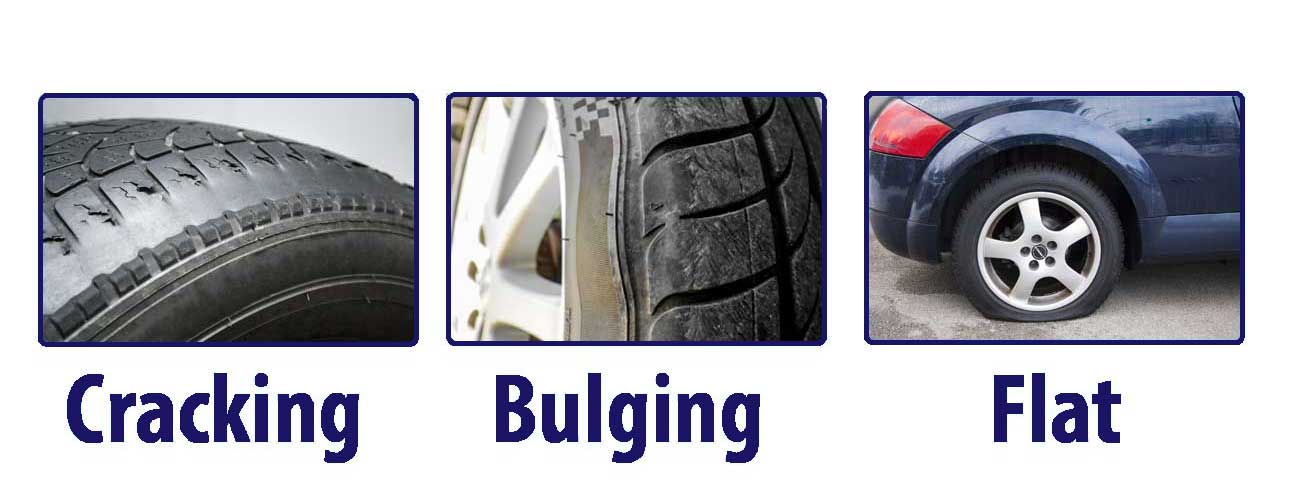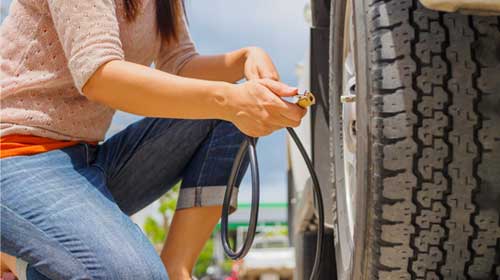One of the most essential parts of any vehicle is its tyres and they often suffer the most wear and tear on the vehicle due to their constant use whether driving or parked. This is why we recommend that you regularly check your tyres to ensure they’re legal, roadworthy and safe to drive on.
It’s also worth noting that your tyres are checked annually as part of your MOT and if they do not meet the legal requirements then the vehicle will fail the MOT. If your vehicle is not yet three years old then it will not require an MOT but you should still have the tyres checked as part of the regular servicing and your garage should advise if they are below the legal limits.
Though your tyres will be checked by a mechanic as part of the MOT and service we still advise that you check them yourself regularly throughout the year.
What to Check on Your Tyres
There are three main aspects of your tyre you need to check:
It is easy and quick to check each of these aspects and this guide will help you understand what to look for.
We recommend checking your tyres at least once a month, which is what we ask our maintenance clients to do, but if you are covering a lot of miles then you might want to reduce this to every fortnight or so. If you’re about to set off on a long journey then you might also want to check the tyre pressure and do a visual check of the tyre conditions.
It’s also advisable that if you spot any wear or potential damage that the tyre is repaired or replaced as soon as you are able to. This avoids any further damage to the tyre or vehicle because of the wear and helps to keep you and your passengers as safe as possible.
Checking the General Tyre Condition
The first check you will need to do is a visual inspection of the tyres.
You should look for any cuts or cracks on the tyre surface, around the entire tyre. Cuts and cracks suggest that the tyre has lost some of its rigidity and structural composition and could be unsafe to drive on so you should try to get the tyre repaired or replaced if you notice larger cracks or any cuts. Small cracks can be normal wear and tear as exposure to UV light can cause them but if you’re ever concerned about the size of one then you should speak to your garage or tyre provider to see if it can be repaired or needs replacing.
You also want to look to see if there are any bulges to the tyre sidewalls. Bulges happen when the sidewall is damaged and so the structural integrity of the tyre is weakened and the air pressure within the tyre creates the bulge out. If you spot a bulge on your tyre it’s important this tyre is replaced as soon as possible as it could blow out at any time, which can be dangerous if you are driving.

If you have a bulging tyre and your vehicle has a spare wheel then you might consider putting your spare on until to travel to have the tyre replaced. We’ve got a guide here on how to change a tyre.
Checking the Tyre Tread Depth
The tread on your tyre is an important safety feature as it is what helps your wheels maintain grip and traction on the surface it is driving over, preventing the vehicle from sliding and crashing. The fact that most countries have a minimum tyre tread depth reflects the importance of it.
In the UK the legal minimum tread depth is 1.6mm across the central three-quarters of the tyre width around the entire wheel.
To check the depth you can use a specialised tread depth tool, a ruler or even a 20 pence piece. With the 20p you’ll just need to put the coin in the tread and check that the tread is more than the border of that edge.
If you find that any of your tyres have a tread below 1.6mm then you should get it replaced as soon as possible.
Checking Tyre Pressure
Another check you’ll want to make is the tyre pressure.
Every model has a different recommended pressure as the optimum pressure varies depending on the weight and design of the vehicle.
You’ll be able to find your car’s recommended pressure in the vehicle manual, on the manufacturer’s website or for some on the vehicle itself in a convenient location like the driver door sill.
You should be aware that some models have different pressure recommendations for the front and rear tyres and so you might need to adjust the pressure on the machine during your checks.
To check your pressure you can use a public tyre pressure machine, which are available at nearly every fuel station in the country, or you can purchase a tyre pressure unit to check them at home, work or where ever else you need. Unless you are doing a lot of driving or are particularly concerned about your tyre pressure then using public units will be good enough.
Please note you should only ever check your tyre pressure when the tyres are cold as heat affects the pressure and filling while hot can have dangerous results. A short drive to a close by fuel station should not heat the tyres up too much but checking after a long journey will not give you accurate reading.
Step by Step to Checking Your Tyre Pressure


